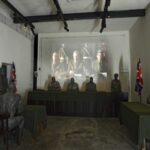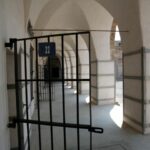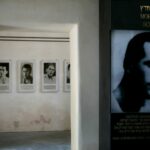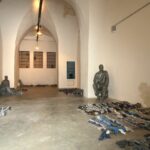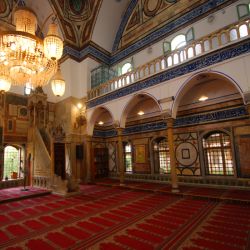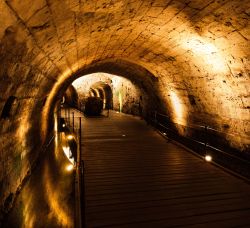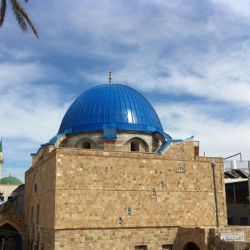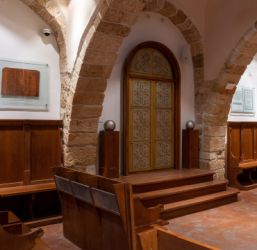Discover the story of the prison and its famous prisoners.
The Museum of Underground Prisoners recounts the historical events that took place there and illustrates the lives of the Jewish underground prisoners and the break-in of Akko Prison through an audio-visual spectacle.
The citadel of Akko was built during the Ottoman Period over the ruins of a 12th century Crusader fortress.
During the Ottoman Period, the citadel served as the palace of Akko’s rulers and then as a prison, army barracks and weapon warehouse for the local garrison.
Several members of the “Hashomer” organization were imprisoned in the Citadel of Akko under Turkish rule.
During the British Mandate, the citadel served as the main prison for the north of Israel. Hundreds of members of the Haganah, Etzel and Lehi underground organizations were imprisoned here because of their struggle to defend the Yishuv (the body of Jewish residents in Palestine, before the establishment of the State of Israel), their war against mandatory rule and their fight for their right to establish a national home in the Land of Israel.
The first prisoner during British military rule was Zeev Jabotinsky, Commander of the Jewish defense of Jerusalem. Nineteen other members of the city’s defense were imprisoned along with him during the 1920 Palestine riots.
In 1939, 43 members of the Haganah commander courses held in Yavniel – including Moshe Dayan and Moshe Carmel, ten Haganah members from Kibbutz Ginosar, as well as 38 members of the Etzel commander courses held in Mishmar Hayarden, were imprisoned in the Citadel of Akko.
On May 4, 1947, Etzel forces broke into the prison in a daring action coordinated with their imprisoned friends. Forty-one prisoners were freed, including thirty Etzel members and eleven Lehi members.
Three members of the attacking force and six released prisoners were killed in a battle that ensued outside of the prison walls against British police and military forces. Operation commander Dov Cohen, AKA “Gundar (District of Unit Commander) Shimshon”, was among the casualties.
As the operation drew to its conclusion, it became evident that 27 prisoners had managed to escape; however, eight escapees were captured, along with five of the Etzel fighters. Three out of the five men captured were sentenced to death by a British military court.
Shlomo Ben-Yosef, Mordechai Schwarcz, Dov Gruner, Yechiel Dov Dresner, Eliezer Kashani, Mordechai Elkachi, Yaakov Weiss, Avshalom Haviv and Meir Nakar were hanged in the Citadel of Akko.
The Jewish Resistance Fighters Museum features an innovative display run by the Ministry of Defense describing the circumstances of the resistance fighters’ imprisonment, their way of life in prison, the story of the Akko prison break and the story of Olei Hagardom (refers to the 12 members of the pre-state Jewish underground who were tried in British Mandate courts and sentenced to death by hanging).
The tour of the Museum highlights the main values guiding the resistance fighters, namely: Zionism and the love of Eretz Yisrael, heroism and sacrifice.
Guided tours must be booked in advance.

